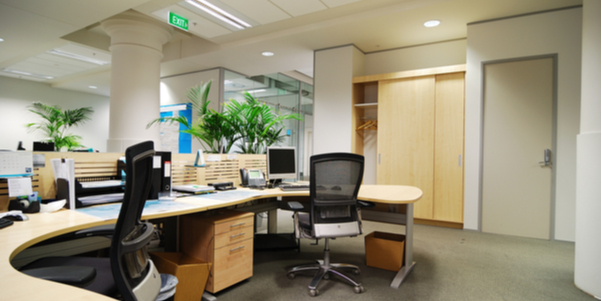Twitter recently made the bold announcement that employees would be able to work from home “forever”. The change comes as companies across the globe weigh up how to manage their offices in the coming months - and beyond.
So as Britain’s schools and retail businesses slowly start to re-open, what does the picture look like for office-based businesses?
The short term
The majority of offices in Britain remain closed in line with current government guidelines around social distancing. But as schools start to go back and shops set to start re-opening their doors later this month, many business owners are starting to think about when and how they can get people back into the office.
One BBC article suggests that the first phase of resuming office life will “involve making basic changes to keep employees safe and allay fears.” Ensuring staff wash their hands as soon as they enter the office and providing alcohol hand gel in each room or department are simple practices companies could introduce.
A rotation system is likely to be one of the first steps businesses take, where staff members take it in turns to come into the office for a couple of days each week. Some may choose to operate systems where two teams alternate weekly in the office, or to introduce staggered working hours.
There are some firms already talking about reopening their doors. Accountancy firm PwC has suggested they will reopen offices in the UK this month. With social distancing guidance in place, they can reportedly accommodate up to 15% of their buildings.
Other suggestions for offices have included thermal cameras taking your temperature when you enter the building and apps to alert you if you get too close to colleagues. It all sounds a bit 'Big Brother', and for small businesses at least, it makes more financial sense to continue working from home than to invest in costly technology.
But for the most part, working from home is likely to continue to be the norm, at least in the short-term. It’s largely expected that as lockdown rules start to relax, the instruction will remain for as many people as possible to continue working from home if they can.
The long term
Covid-19 has sparked a global working from home experiment, which has forced businesses to rethink the idea that work has to be tied to an office.
While many businesses pre-coronavirus will have supported people to work from home to some extent, it's typically been something that was negotiated between employers and individual workers.
The coronavirus has forced the hand of business owners previously unwilling or cautious about offering more flexible working conditions. And many will have been surprised to see that productivity levels haven’t dropped dramatically - as they may have feared.
In one study, 68% of employees said they feel they are either more productive or equally productive from home. And 75% said they believe their manager trusts them to be productive at home.
For small business owners, now is the time to start thinking about life after Covid-19. How have your staff adjusted to working from home? Is productivity up? What about staff morale and engagement?
One of the big questions is: how much do your staff want to return to the office? Are they chomping at the bit to come back? Or are they enjoying working from home so much, that they don’t want to return to the office at all?
Of course, there are the financial considerations of having an office space to consider too. If your company is operating well with people working from home and it suits your workers, does it make sense to re-open the office? But might there be a risk in the long-term, if team members only ever interact with each other via Zoom, that engagement and morale will start to dwindle as a result?
At the moment, it feels impossible to predict where we’ll be in two, three, six months time. Will everyone be back in the office by Christmas? What will that office look like? And will more companies be giving their workers freedom over where they work?
One thing for sure is this strange period has shown us that working remotely is possible. And Twitter’s announcement that its employees will be allowed to work from home forever feels like we’re heading towards a more flexible future, where workers can choose where and when they want to work.
The positive story is that coronavirus has opened up some much-needed conversations around work-life balance. Whatever the future of the office, hopefully this is a positive step towards happier and healthier employees.





![The Bedford College Group logo [WHITE]](https://www.chamber-business.com/hs-fs/hubfs/The%20Bedford%20College%20Group%20logo%20%5BWHITE%5D.png?width=139&height=81&name=The%20Bedford%20College%20Group%20logo%20%5BWHITE%5D.png)
